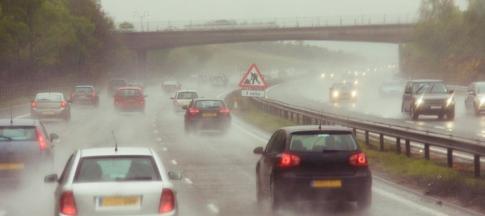
We all know the weather in the UK is pretty unpredictable. But, as the climate changes, we're likely to see increased extreme weather events.[1]
Below we discuss what the Met Office’s red, amber and yellow UK weather warnings mean, and how they affect you.
What's a weather warning?
The Met Office issues weather warnings to let the public know about predicted weather events and the risks they pose.
Warnings are issued at any time, up to seven days in advance for:
- rain
- thunderstorms
- lightning
- wind
- snow
- ice
- extreme heat
- fog
Each type of weather event comes with its own challenges. High wind, heavy rain and freezing conditions can all have adverse effects on our homes.
They can also make it difficult to drive, as can snow and fog. And extreme heat can pose health risks, such as heatstroke – especially in pets.
Check what your car insurance, home insurance and travel insurance cover in the event of severe weather.
Weather warning colours explained
The three types of warnings issued in the UK are:
- red
- amber
- yellow
They're ranked based on how likely they are to occur, and how high the impact is likely to be. For example, a red weather warning is very likely to happen and expected to have a high impact.
What’s a red weather warning?
Red is the most urgent warning issued in the UK.
It means that potentially dangerous weather has been forecast, and you should be proactive in staying safe when the weather hits.
A red warning also comes with the risk to life expectation, and widespread travel disruption. There’s also likely to disrupt energy supplies, and potentially damage property and infrastructure.
Can I drive during a red weather warning?
No weather warnings prohibit you from driving. The warning only gives you a heads up to possible risks, and their likelihood of affecting you.
The Met Office says: “You should avoid travelling, where possible, and follow the advice of the emergency services and local authorities.”
So, you can legally drive, and your insurance cover won’t be affected. But you’re putting yourself and others at risk as there’s an increased chance of having an accident during bad weather.
Find out more about driving in extreme weather conditions.
What's an amber weather warning?
An amber warning is a step down from red, but still expected to be severe and disruptive.
There’s a likelihood of road and rail closures, and travel delays across the board. There may also be power cuts and risk of damage to property, with a potential risk to life.
What's a yellow weather warning?
Yellow warnings are issued for weather that may have some impact but isn’t expected to be severe. It might cause travel disruption, for example, but hopefully nothing too serious.
While yellow-warning weather might not affect your daily routine, it’s still important to consider whether it’s likely to affect you and if you should change your plans.
Yellow warnings might be issued where the impact may be high, but the likelihood is uncertain. We recommend checking the Met Office warning for context.
How to check weather warnings
The Met Office issues weather warnings via many channels. You can check the Met Office UK weather warnings here, or download their app.
You can also sign up for email alerts, and – if you watch or listen to channels with news bulletins – you’re likely to hear about them on the TV or radio.
[1] https://www.metoffice.gov.uk/research/climate/understanding-climate/uk-and-global-extreme-events-heavy-rainfall-and-floods


